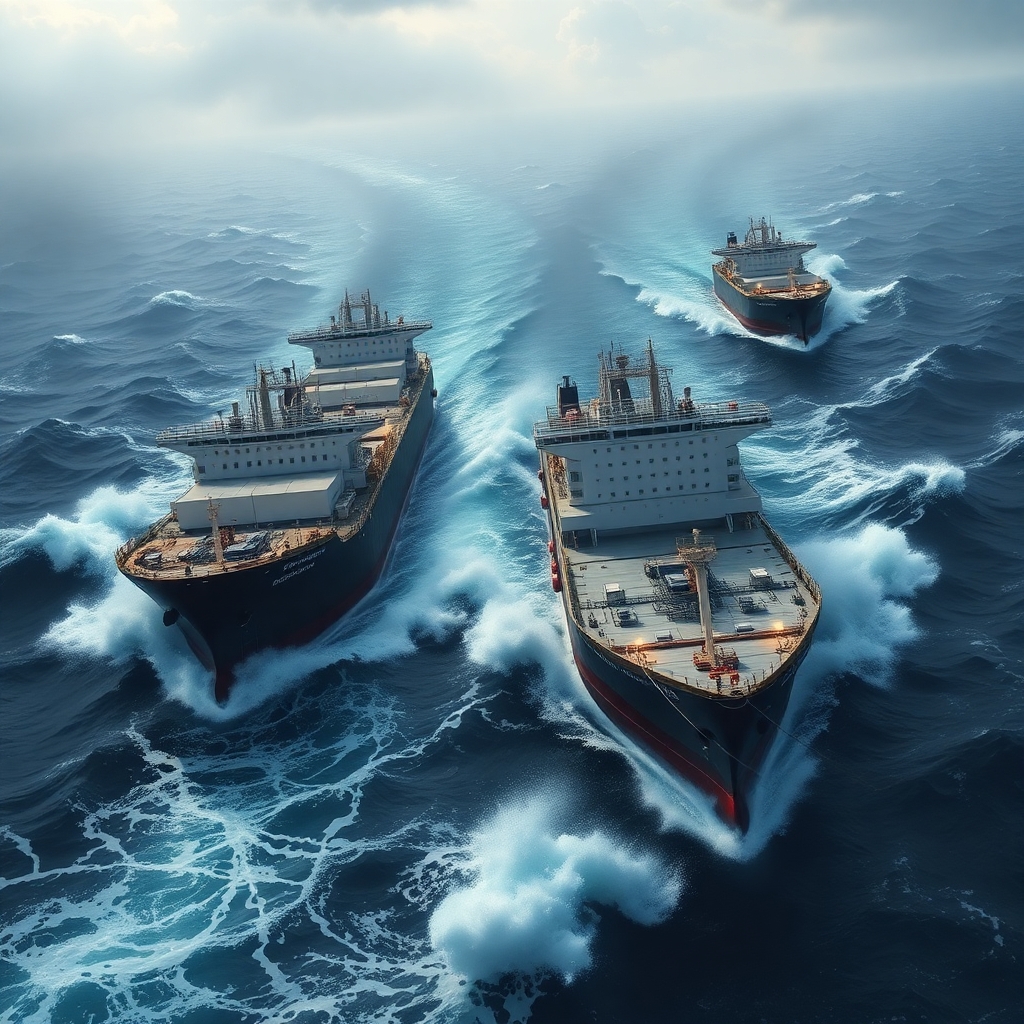Oil Hits $100+/Barrel Risk Point if Strait of Hormuz Shuts: Goldman Sachs Warns
Civilizations have risen and fallen for less than what now hinges on a narrow ribbon of sea between Iran and Oman. The Strait of Hormuz, so slender it seems almost embarrassed on a world map, has become a twenty–first-century equivalent of the Silk Road or the Roman aqueduct: a fragile channel without which the modern world struggles to function. The irony is striking—our global economy, with all its satellites, algorithms, and high-frequency trades, remains hostage to geography as if it were still the Age of Sail.
Goldman Sachs recently reminded investors of this uncomfortable truth. Their analysts warned that if this maritime bottleneck were ever squeezed shut, even briefly, oil could vault past $100 a barrel, perhaps even $120. For an economy already teetering between inflation and stagnation, that is not just a market forecast—it is a thunderclap.
Why the Strait of Hormuz Matters So Much
Picture the world economy as an organism: energy its bloodstream, money its nervous system. The Strait of Hormuz is not a minor capillary—it is the carotid artery. Each day, about 21 million barrels of oil pass through it. One-fifth of the planet’s daily thirst for petroleum depends on this fragile corridor. Close it, and the convulsions would not respect borders.
From Saudi Arabia’s desert kingdoms to the Gulf’s glass skyscrapers, nations rely on this single passage. Pipelines exist, but they are like side roads compared to a superhighway. History has always punished civilizations that built their power on bottlenecks, and the Gulf is no exception.
Goldman Sachs’ Scenario: Oil at $120 a Barrel
Goldman’s report reads less like financial analysis than like a thought experiment in fragility. What if 15 to 20 million barrels were suddenly removed from the global bloodstream? Overnight, Brent crude would likely cross $100, perhaps $120 if the disruption lasted weeks.
But here is the paradox: sometimes reality is irrelevant. Rumors, drills, even the silhouette of a warship can send markets trembling. Traders know that in oil, fear itself is combustible.
What Is Driving the Rising Tensions?
The Middle East has always specialized in contradictions: holy lands turned battlegrounds, vast oil reserves amid chronic instability. Hormuz is its perfect metaphor—a vital artery located in a geopolitical fault line. Today’s tensions include:
- A U.S.–Iranian standoff stretching from nuclear disputes to drone skirmishes.
- Naval maneuvers by the Iranian Revolutionary Guard, staged like theater for the world’s cameras.
- Attacks on tankers, part sabotage, part message.
- Rivalries involving Saudi Arabia, Israel, and militias that treat the Gulf like a chessboard soaked in kerosene.
A complete blockade would be drastic, but history whispers that even a single dramatic incident is enough to rattle global confidence.
Markets Stay Calm Despite Mideast Tensions—Oil Rebounds, Equities Hold Steady – CrypTonaryx

https://www.reuters.com/business/energy
How Markets Are Reacting Already
Markets are less patient than diplomats. Energy giants suddenly gleam in investors’ eyes. Oil futures tick upward. Gold and U.S. Treasuries—the financial equivalent of medieval castles—are filling with nervous capital.
Even renewables and uranium stocks benefit, proof that volatility has its winners. When fossil fuel arteries look fragile, even the long bet on green energy seems safer than betting on calm seas.
What It Means for Ordinary Consumers
Consumers may not read commodity reports, but they feel their consequences at the checkout line. Gasoline at $6 a gallon, plane tickets creeping upward, food prices shadowed by fuel and fertilizer costs. Oil at $120 is not just an energy crisis; it is a tax on daily life.
Economists warn of stagflation, that bleak marriage of rising prices and stagnating growth. Central banks face their own Greek tragedy: raise rates and risk recession, or hold steady and let inflation devour wages. Either way, households will pay.
Could the Situation Escalate Militarily?
Economic turbulence in the Gulf rarely travels alone; it often comes with gunboats. The U.S. Fifth Fleet prowls the waters, NATO dusts off naval maps, China quietly stockpiles oil while publicly preaching restraint. History repeats: from the 1980s “Tanker War” to the Gulf War, the region has shown that a spark in Hormuz can light global fires.
How Countries and Companies Can Prepare
The prescriptions are familiar, almost ritualistic: diversify imports, invest in renewables, expand reserves, practice diplomacy. The International Energy Agency waits like a fire brigade, ready to release strategic barrels.
And yet, all these measures are plaster on a fragile wall. They acknowledge dependence, they do not cure it.
Final Thoughts: A Global Pressure Point
For now, tankers glide through Hormuz as though nothing were amiss. But beneath that appearance lies a paradox: the fate of the world economy rests on a maritime corridor so narrow it could be closed with a handful of mines or a single naval confrontation.
Goldman Sachs is not predicting apocalypse. Its warning is subtler: the global system, for all its sophistication, still hangs by threads of geography. One artery, endlessly fragile, endlessly essential, reminds us that modernity’s greatest illusion is invulnerability.rices on the rise, both governments and investors need to be vigilant. As history has shown, this narrow waterway carries massive weight—not just for oil, but for economic stability worldwide.
